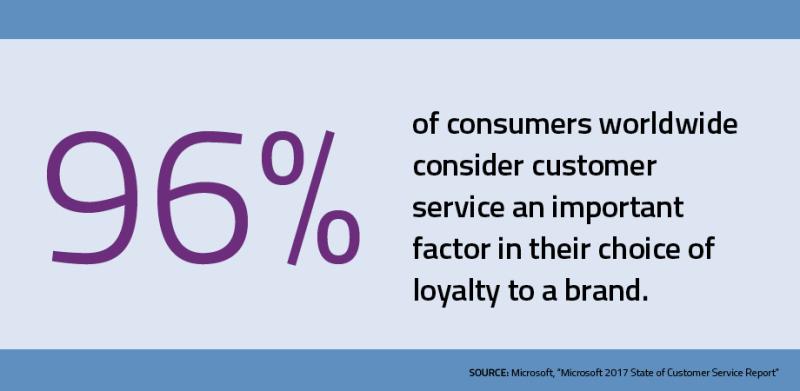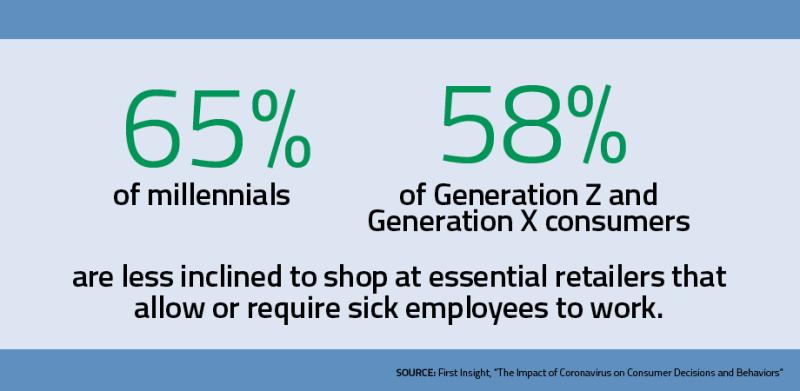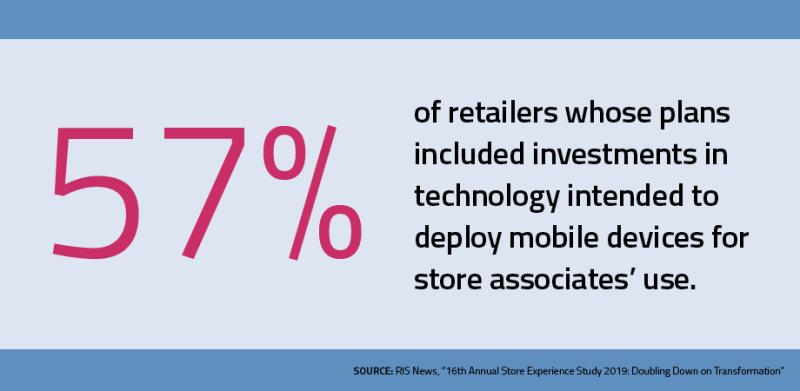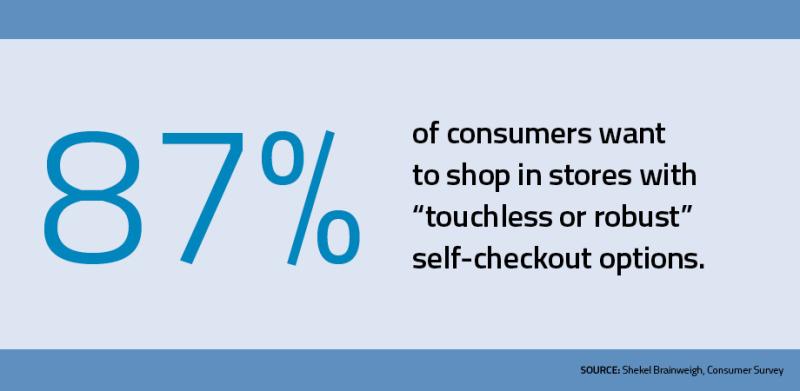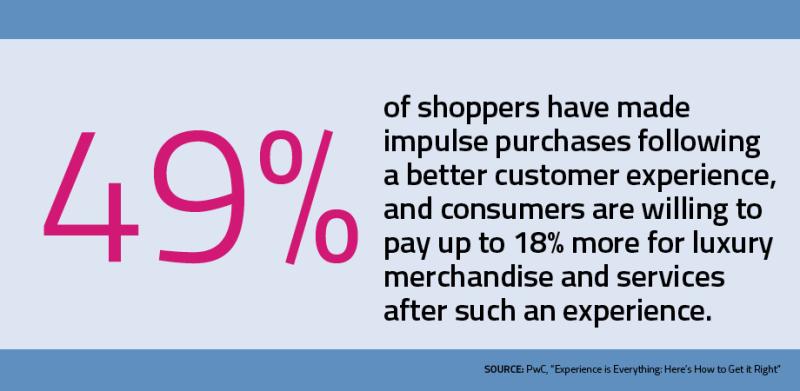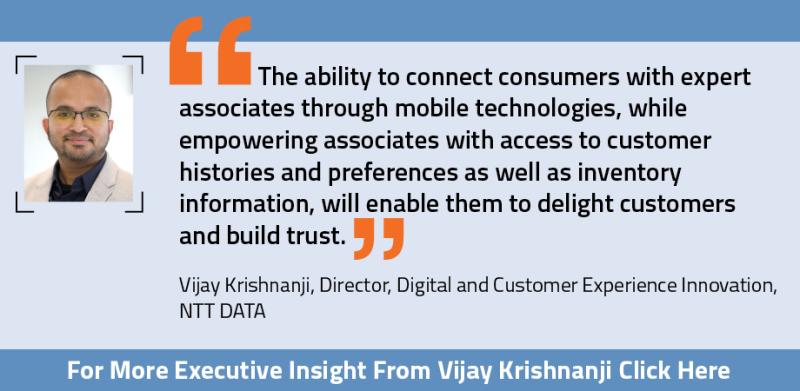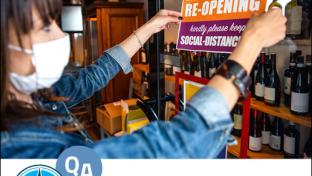A New Frontier for Frontline Retail Workers
It’s early morning, and an employee arrives for work at a large chain store. She fills click-and-collect orders for several hours, then moves to assist customers in the self-checkout area. Later that day she pivots yet again, wielding a mobile device to perform clienteling duties in the store aisles. She never feels disgruntled, unsafe, or ill-equipped for the tasks at hand, because the retailer recognizes that its employees are its greatest asset. As such, it has equipped her with the proper cross-training and tools for handling multiple, changing roles. It has also taken steps to ensure her physical and mental wellbeing.
This scenario is fictional, but it underscores a significant change occurring across all retail verticals: While the role of the retail frontline associate had already begun a radical transformation before COVID-19 emerged, the global pandemic has greatly accelerated the pace of evolution. In brick-and-mortar stores, customer-facing retail jobs now demand flexibility and an incredibly wide range of skills, thanks to an increasingly longer list of catalysts. That list encompasses changing consumer preferences, new operating models and layouts, and omnichannel-enabled shopping behaviors. It also includes pandemic-related factors, like new social distancing requirements and heightened consumer preference for contactless transactions.
More than ever before, retailers must understand their customer-facing employees’ role and undertake initiatives to ensure that frontline employees remain safe, empowered, and satisfied on the job. In fact, developing and acting upon this understanding is critical if retailers are to succeed in the wake of COVID-19 and beyond.
High levels of employee happiness and satisfaction lead to high levels of customer satisfaction, increasing consumer spend and loyalty. For example, a study by Glassdoor reveals a correlation between the average overall rating companies (including retailers) received from employees using its site and the score earned by employers on the American Customer Satisfaction Index (ACSI), which takes into account opinions from 300,000 U.S. consumers. For retail, each one-star improvement in an employee Glassdoor rating on a scale of one to five stars corresponded to a 3.2 out of 100 point improvement in customer satisfaction scores, “a statistically significant impact,” the authors write.
Moreover, according to Microsoft, 96% of consumers worldwide consider customer service an important factor in their choice of loyalty to a brand. A study by PwC shows that 49% of shoppers have made impulse purchases following a better customer experience and that consumers are willing to pay up to 18% more for luxury merchandise and services after such an experience.
Changing Customer Expectations Lead to New Employee Roles
The COVID-19 pandemic has accelerated several trends in customer expectations and introduced others. Notably, consumers are more concerned about their own protection and the wellbeing and safety of store employees, sparking heightened demand for low-contact and contactless shopping and transaction options. A study by Shekel Brainweigh reveals that 87% of consumers want to shop in stores with “touchless or robust” self-checkout options. The shift away from traditional point-of-sale lanes moves many frontline retail employees into customer service roles, such as directing shoppers to specific point-of-sale terminals and troubleshooting transaction processes.
Meanwhile, convenience is becoming an increasingly significant priority. Admittedly, consumers have always been interested in reducing shopping hassles, but COVID-19-related concerns have elevated this customer experience requirement. Shoppers want to minimize browsing time, avoid going to multiple stores to find the items they want, and know that the merchandise they desire is in stock at the first store they visit. The end-result: marked consumer interest in digital and combination physical/digital (phygital) experiences, as well as in lightning-fast delivery.
Consistent with this change, retailers are assigning teams of frontline employees to step out from behind point-of-sale terminals. Instead of ringing up transactions, associates perform such tasks as fulfilling click-and-collect and/or buy online, pick up in store (BOPIS) orders and customer service
Footlocker has become a trailblazer here. Associates at its new “power stores” function as “community ambassadors” whose responsibilities transcend the point of sale. Team members are tasked with everything from serving as the “voice” of the overall store brand and culture to using mobile devices to access repositories of detailed product knowledge and customer histories for engaging with shoppers.
Trust and transparency, too, are garnering a larger share of consumers’ attention. Pre-COVID, more socially-conscious consumers were already demonstrating a growing interest in the origin of retailers’ merchandise offerings and the details of retailer processes. Now, there is an equally sharp focus on how retailers treat employees and a preference for those that take such steps as prioritizing employee health over their own economic needs. Studies by First Insight indicate that 65% of millennials and 58% of Generation Z and Generation X consumers are less inclined to shop at essential retailers that allow or require sick employees to work.
Consumers also want assurance that retailers are fostering compliance with social distancing and other practices being implemented in the “new normal.” Frontline associates play a key role here, serving as “ambassadors” who remind shoppers to remain six feet apart from others and sanitizing surfaces as well as any merchandise that appears to have been touched by too many hands. For example, Walmart has appointed “Health Ambassadors” who remind customers of mask-wearing requirements as they enter the store and act to reverse breeches of its COVID-19 protocols.
Finally, consumers have long shown a strong desire to be recognized for their past purchases and loyalty through custom-tailored offers and services to meet their individual needs. The coronavirus pandemic has taken this trend to the next level, with customers demanding that retailers possess and demonstrate a keen understanding of their product preferences and favored order placement/receipt methods.
Retailers are responding in part by assigning frontline employees to assume a consultative role on the sales floor. Some are adopting new store models, extending BOPIS and click-and-collect to include curbside pickup. Lowe’s, Walmart, and other retailers have taken this one step further, creating separate pickup zones for first responders, elderly consumers, and immunocompromised individuals. Sam’s Club has introduced “concierge shopping” services; consumers can drive up to a store and hand their shopping list to an associate to do the rest.
In certain instances, brick-and-mortar storefronts are being converted to dark stores that function solely as fulfillment centers where prepaid merchandise can be retrieved in person. These approaches, and others like them, necessitate scheduling and coordinating frontline employee teams to locate merchandise in timely fashion, deliver it to customers’ vehicles, and troubleshoot any problems that may arise.
Tools and Support: The Backbone of the Frontline Employee Frontier
These new business models and practices — and more importantly, the subsequent new roles assumed by frontline retail associates — must be data-driven and supported by processes and tools that protect employees, empowering them to better perform new tasks and engendering job satisfaction. Essentials being incorporated into the “store of the future” encompass:
Health- and safety-oriented initiatives. Such systems protect frontline employees, demonstrate retailers’ concern for their wellbeing and, ultimately, prove that employers recognize team members’ value to the organization. Retailers have furnished employees with masks and protective gear (like gloves), altered store layouts to facilitate social distancing, and deployed systems for automated daily health status reporting and contact tracing.
Smart scheduling and task management systems. Smart scheduling systems that harness artificial intelligence (AI) and other analytics to mine time-and-attendance and store traffic trends safeguard employees by ensuring that stores are sufficiently staffed to accommodate fluctuating traffic patterns, but not so overrun with employees that social distancing is difficult. Just as important, these systems take into account employee preferences as part of their employee scheduling “criteria,” generating worker-friendly schedules.
Meanwhile, AI-based and similar task management solutions help associates keep track of and prioritize tasks, improving productivity and worker satisfaction.
Some retailers leverage other technology to bolster efficiencies and limit employee exposure on the sales floor. A grocery retailer, for example, utilizes an inexpensive IoT rail drone deployed across store aisles to enable inventory scanning throughout the day. A connection between the drone and inventory and supply chain data, paired with a dashboard, quickly delivers accurate inventory information to store managers while releasing store associates from in-aisle inventory-counting duties.
Mobile devices and apps/solutions. Such offerings transform frontline associates into experts and give them a base of knowledge from which to fulfill their roles, in turn fostering job satisfaction. With these devices and apps/solutions in hand, associates can access customer histories and inventory/supply chain information, enabling them to answer customers’ questions and engage in consultative selling. Mobile devices also support new store operating models, specifically BOPIS/curbside pickup and dark stores, by putting at employees’ fingertips the data they need to receive and process orders with maximum efficiency.
Additionally, mobile solutions that allow consumers to connect with associates in-store before completing a purchase (for example via an app while completing a BOPIS transaction from home or even a store parking lot) will also be part of the store of the future. Not surprisingly, in its 16th Annual Store Experience Study, RIS found that 57% of retailers intend to deploy mobile devices for associate use.
Analytics. Recommendation engines that analyze customer data and generate accurate, individualized customer profiles are being added to frontline associates’ technology toolboxes to aid them in clienteling. Other forms of analytics serve to create optimized picking directives, facilitating the filling of BOPIS and click-and-collect orders.
Guided selling solutions. Footlocker is among retailers whose employees use mobile tablets not only to check inventory and devise product recommendations based on customer histories, but also to walk customers through product features, facilitating the sales process.
Walmart’s “Ask Sam” smartphone app, designed for use by customer-facing associates, exemplifies the comprehensive “store of the future” solutions in which retailers must invest to equip and empower employees in the new frontier. Tested in Sam’s Club stores in 2019, the app gives associates the capability to look up prices, product locations and features, information on sales, and “other matters of potential customer interest,” writes Meng Chee, Walmart’s vice president and chief product officer, in a post on the retailer’s blog.
Chee notes that the launch of the app reflects Walmart’s goal to develop “products, services, and platform capabilities that make our associates’ and customers lives easier.” He adds that Ask Sam should “become more sophisticated with higher accuracy over time” because it utilizes machine learning and monitors the types of questions associates encounter and adjusts accordingly. Walmart anticipates that the app will increase associates’ confidence level in assisting customers and enable them to do so more efficiently.
Cloud-based training. Increasingly, retailers have invested in cloud-based platforms that allow training to occur when and where it is most convenient for frontline associates, rather than in a classroom. For instance, a cloud-based platform implemented at Footlocker delivers instruction to associates’ tablets and smartphones when stores are not busy and at other prescribed times. Instruction can be adjusted and personalized to reflect changing employee roles, and executives log in to the system daily to assess progress.
Preparing for the Future
Retailers cannot simply design new processes and expect employees to adapt to them and fill multiple customer-facing roles. Rather, delivering customer experiences that bolster customer loyalty and the bottom line necessitates considering the end-to-end experience of frontline retail employees throughout their workdays. It means preparing for the future by providing employees with the tools and training that:
- Empower employees to do their jobs safely and successfully, and in turn, with great satisfaction
- Facilitate employees’ transition from task-oriented workers to team members whose work, input, and ideas are valuable; contribute to the problem-solving process; and have a positive impact on the bottom line
Forward-thinking retailers are setting aside other priorities to attain these objectives. For instance, Bed Bath & Beyond announced plans to invest $250 million to support omnichannel operations in 2020 and beyond. Funds have been earmarked for solutions to enable BOPIS and curbside pickup, omni-inventory management, and digital marketing/personalization. The retailer has postponed approximately $150 million in planned fiscal 2020 capital expenditures, including some store remodels to “pivot to spend on ‘essential’ capital expenditures,” president and CEO Mark Tritton said in an April 2020 earnings call.
On the training side, retailers will need to ensure employee protection, empowerment, and satisfaction by educating employees on new health and safety procedures. They will need to define the “new normal” (such as mandated sanitation stations and schedules, sick days, and the number of customers permitted in the store at any one time) and positioning all practices as essential to employees’ wellbeing.
As part of its Pandemic Response Portfolio, NTT DATA offers the same advice experts give to the general public around social distancing, wearing masks, hand-washing and staying home if they are experiencing symptoms of the virus. This advice holds for retail employees as well. For the health and safety of employees and customers alike, retailers should clarify guidelines for safe interactions on their websites, and mobile apps and in their in-store signage. By performing hygiene-related and sanitizing tasks more frequently and visibly during work hours, retailers can help make their employees confident in the policies they are using to keep them safe.
Retailers would also do well to educate employees on their preferred method of enforcing safety policies — for instance, how to handle shoppers who refuse to wear masks or follow social distancing directives.
Additionally, soliciting employee feedback on training and its efficacy, along with suggestions for improvement, is critical. Along with this feedback, key performance indicators (KPIs) and other data can be used to drive any changes in training procedures, bolstering employee morale, enhancing performance, and supporting success.
No matter the type of tools and training afforded to employees, retailers must convey to them that automation is not the enemy. Rather, the potential of automation to protect and empower them, leading to greater satisfaction in their work (and increasing customer satisfaction in the bargain), should remain the crux of the message. AI and other analytics tools can learn customers’ preferences and buying habits and make purchasing suggestions or issue discounts based on that data, but consumers still demand the personal touch.
For example, in a recent webinar, Doug Stephens of The Retail Prophet noted that nearly half of consumers consider assistance from a knowledgeable sales associate an inducement to travel to a physical store. Nearly 50% deemed it important to speak with a frontline store employee during the final stages of a purchase, while 75% said they desire more human interaction with store employees, rather than less, in the future. Seventy-two percent of shoppers think an “even better shopping experience” results when they encounter frontline employees equipped with mobile devices.
The Greater Community Good
Retail businesses of all types, including grocery, restaurants, and pharmacies as well as those in the hard and soft goods specialty segments and beyond, are an integral part of the communities in which they do business. For example, companies like Loblaw — whose purpose is to help consumers “Live Life Well” — focus on making it easier for customers to practice a healthy lifestyle through quality products, personalized services, and health and wellness programs. They also prioritize initiatives to “give back” to the community.
Employees and frontline workers are a critical component in delivering the products and services that support a retailer’s mission. Consequently, it is time for retailers to closely align their customer experience strategy with evolving customer needs and operating models, arming frontline employees with the tools and solutions they need to properly fulfill their ever-changing roles. Retailers that approach the task with an eye toward worker safety, satisfaction, and success possess the greatest potential to attract and retain the caliber of happy, productive employees that ensures a positive customer experience, engenders customer loyalty, and leads to a better bottom line.



